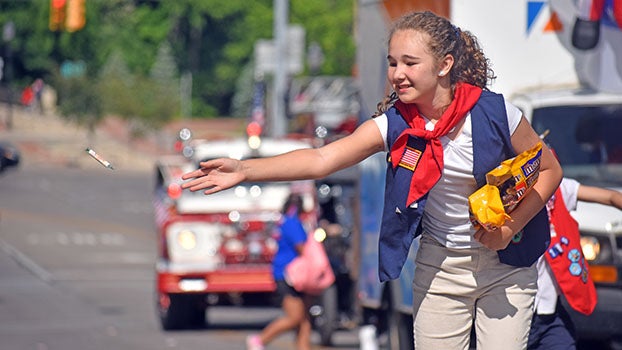What makes a snow day?
Published 8:46 am Thursday, January 8, 2015

A woman is bundled up as she crosses Main Street in downtown Niles Wednesday. Temperatures plummeted below zero, causing area schools to close. (Submitted photo)
It did not take long for area students to experience their first “snow day” of 2015.
On Wednesday, just seven days into the calendar year, dangerously low temperatures and whiteout conditions contributed to school being cancelled in the Niles, Brandywine and Buchanan school districts.
The process of determining whether or not to close or delay school because of weather typically begins early in the morning when superintendents get an update on road conditions from their transportation directors.
Superintendents then call each other to share what they’ve learned.
Niles, Brandywine and Buchanan schools usually make the same decision, said Brandywine Supt. John Jarpe.
“Usually between 5:30 and 6 a.m. we have an idea as to whether or not we will open or close that day,” he said. “We then contact media and make an all-school call to our staff and parents telling them we are closed. We do not announce it when we are staying open. Sometimes we delay the school opening, but that is a disruption to working families with kids, so I personally do not like to use lots of delays.”
Buchanan Supt. Andrea van der Laan said she looks at several factors, including road conditions, wind speed, visibility and temperature, before making a decision to close or delay school.
“If we are looking at temperature, we review the National Windchill Chart,” Van der Laan said. “The chart gives us an idea of how long a student can be in the cold before frostbite occurs. For example, it could be minus 5 with no wind and we would be open. In contrast, we could be minus 5 with 15 miles-per-hour winds causing a minus-26 windchill. We would close.”
A decision to delay, van der Laan said, usually occurs with fog or when snow has tapered off or stopped.
“If we know plows are out, we may just need an hour or two for them to finish,” she said.
Area schools closed several times during the 2013-14 school year because of the extreme winter.
Brandywine used nine snow days last year, while Niles used eight and Buchanan six, according to each school’s superintendent.






